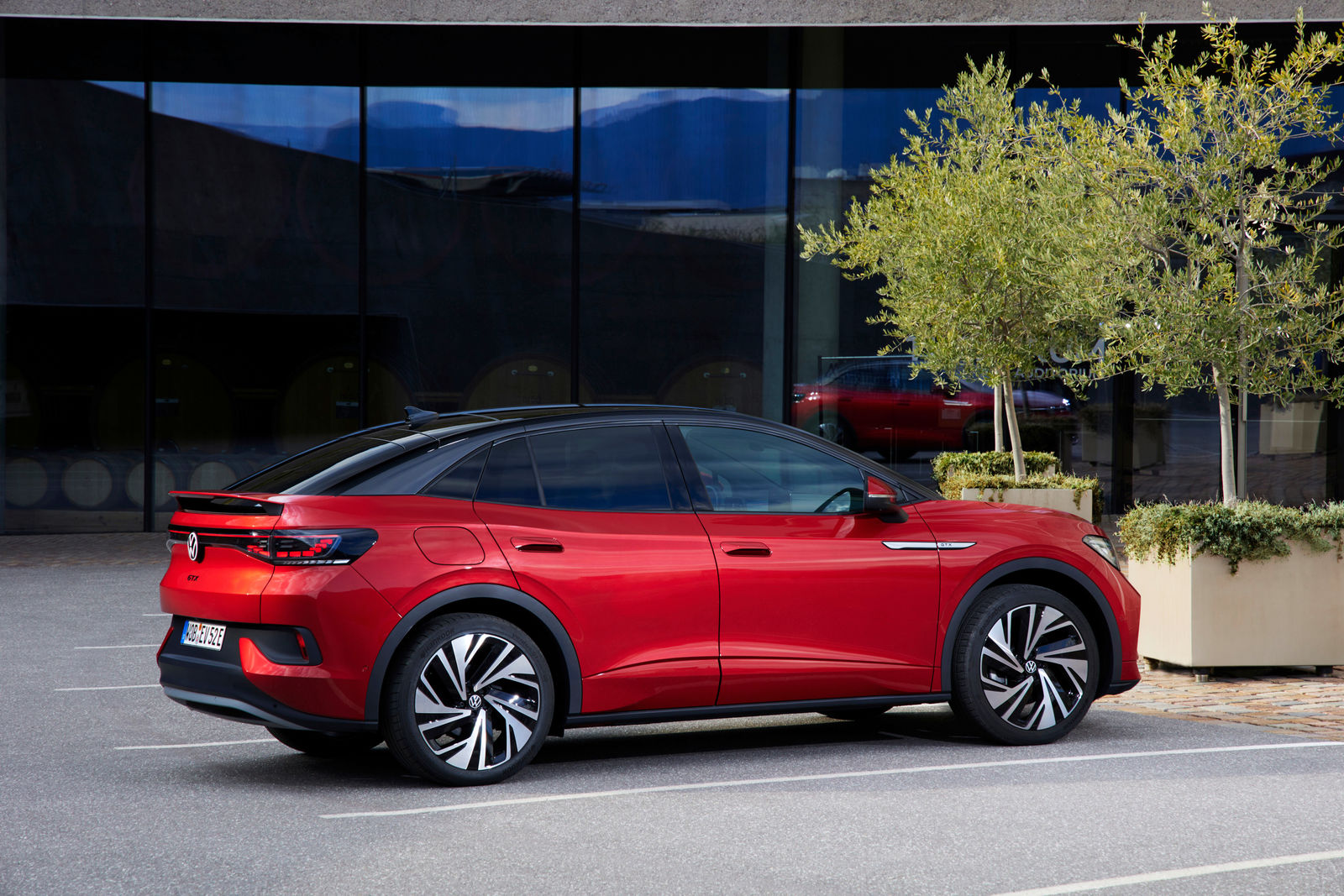Confident and elegant. With its concentrated expression, the stripped-back cool air openings and the large painted surfaces, the face of the ID.5 appears independent, confident and friendly from every angle. The exclusively designed air intakes on the ID.5 GTX flagship model give it a more powerful touch than the ID.5 Pro2. On the whole, lines on the ID.5 are soft and flowing – but athletic and muscular at the same time. The short overhangs and large wheels enhance the strong appearance. The ID.5 is 4.60 metres long, 1.85 metres wide and 1.61 metres tall.
Dynamic roof line. The high front underlines the E-SUV coupé’s robust power, while the flat angle of the A-pillars, which have been pulled forwards, adds a new, elegant flow to the roof line – this stretches out close to the body and runs into the extended D-pillars. The athletic shoulder lines make for a powerful, exciting effect. At the rear, horizontal lines emphasise the width, with the full-length lighting strip having a particularly powerful effect.
Drag coefficient from 0.26. The design of the E-SUV coupé looks as though it has been shaped by the wind – and indeed it has. The ID.5 Pro and the ID.5 Pro Performance achieve a very low drag coefficient of 0.26; in the ID.5 GTX the drag coefficient is 0.27. The decisive factor for the good aerodynamic properties is the body’s basic shape with the greenhouse, which drops gently to the rear and becomes increasingly narrow. The air stream flows along the rear window, moves around and then through the spoiler and does not start to swirl until it reaches the area underneath. With this flow pattern, the spoiler, the sculptured shape of the tail light clusters and lifted diffuser insert work together – with the additional goal of reducing down force on the rear axle.
Intelligent aerodynamic details. The flush door handles on the ID.5 are also designed to optimise air flow for minimal drag, the same goes for the wheel rims with their flat design. The electric radiator roller blind in the vehicle front end does not open until the power units need cooled air – only then do they need to force air through the cooling channels. In the underbody, small spoilers and trim panels guide the flow of air.
